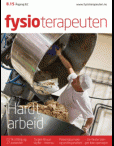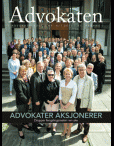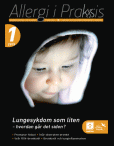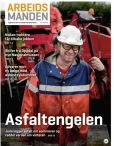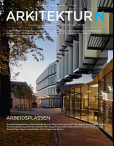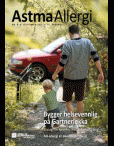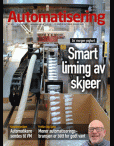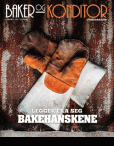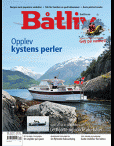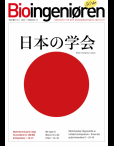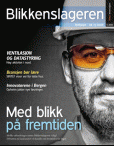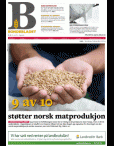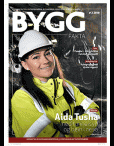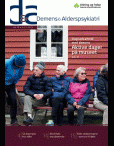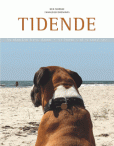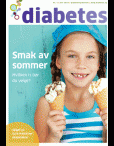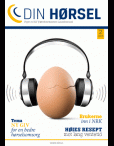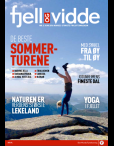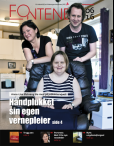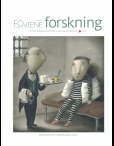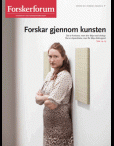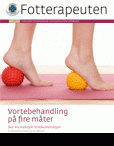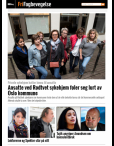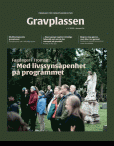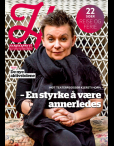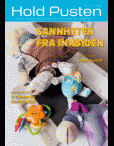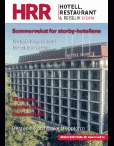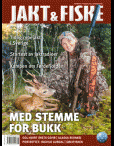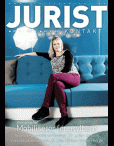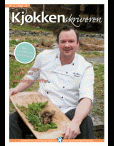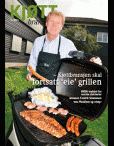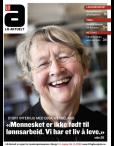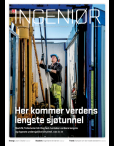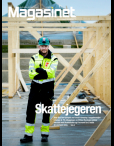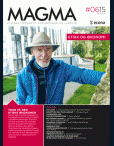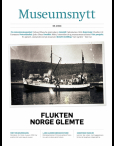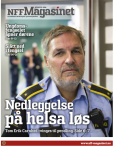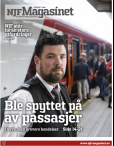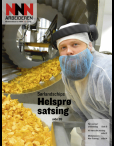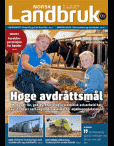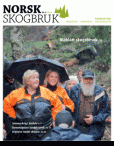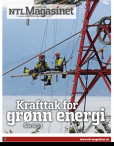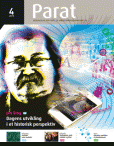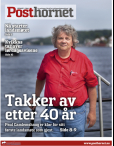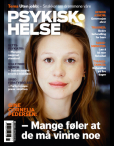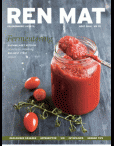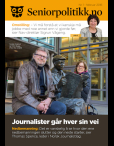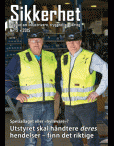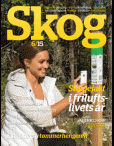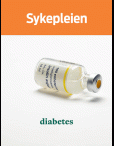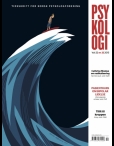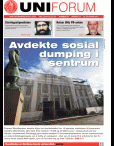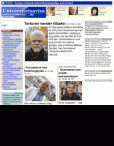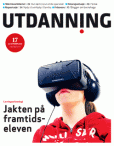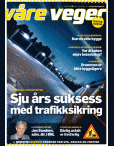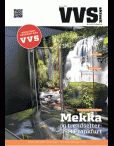Fysioterapeuten
26.01.2022
Joakim Moestue Halvorsen, Forsterket rehabilitering Aker, Helseetaten, Oslo kommune, Oslo, Norway. joakim.halvorsen@outlook.com. Nick Worth, University of Salford, Salford, GB and Queen Margaret University, Edinburgh, GB. Cathy Bulley, Queen Margaret University, Edinburgh, GB.
... This scientific article has been peer-reviewed according to Fysioterapeuten's guidelines, and was accepted on November 2nd, 2021. Ethical approval was granted by the Queen Margaret University (QMU) Divisional Research Ethics Committee. No conflicts of interest stated. Note: Moestue Halvorsen is associated with Fysioterapeuten in connection with the podcast «Lateralt og medialt - en podcast om fysioterapi». This paper was first published at www.fysioterapeuten.no. Introduction
Frozen shoulder is a debilitating condition identified by severe pain and stiffness of the shoulder and has been associated with reduced quality of life among individuals living with the condition (1). Although it can be secondary to trauma or prolonged immobilization, primary frozen shoulder is seen as an idiopathic process marked by initial inflammation and subsequent fibrosis, capsular contracture, and reduced joint volume (2, 3). Since the seminal paper by Reeves (4) in 1975 on the natural history of frozen shoulder, the condition has been thought of as selflimiting, leading to full resolution without treatment after one to three years. However, a recent systematic review by Wong et al. (5) found that the condition could still cause symptoms and disability several years after onset.
Frozen shoulder has traditionally been reported to occur in 2-5 % of the general population, although there are uncertainties regarding the actual life-time prevalence of the condition (3). As the incidence of frozen shoulder peaks in the fifth and sixth decade, a high proportion of the patients are in the working population, leading to a substantial economic burden to both the individual and the society (6). In addition to costs accumulating from the loss of workdays, the healthcare system's cost from treatments of frozen shoulder is substantial (7).
Although there is no Norwegian national guideline dictating the care and interventions that should be provided for frozen shoulder, clinical practice guidelines for the management of the condition have been developed for physical therapists both in Norway (8), and abroad (9, 10).
To help guide clinicians with decision-making and to identify appropriate interventions, a dichotomization between the «pain-predominant» and the «stiffness-pre
© Author(s) (or their employer(s)) 2022. Re-use permitted under CC BY-NC. No commercial re-use. See rights and permissions (https://creativecommons.org/licenses/by-nc/4.0/). Published by Fysioterapeuten.dominant» stage of the disease has been recommended. Inflammation is the hallmark of the former, while capsular contracture is thought to be the most notable feature in the latter (9). A vast number of interventions has been proposed for the different stages of frozen shoulder, ranging from conservative management such as education and advice, supervised neglect, exercise therapy, stretching, joint mobilization and manipulation, through minimally invasive procedures like acupuncture and injection therapy, and finally to surgical treatment such as capsular release (3, 9). In a survey of 289 physiotherapists in the United Kingdom, good agreement was observed for certain interventions in both pain-predominant and stiffness-predominant frozen shoulder. Advice and education were recognized as essential interventions in both stages. There was also good agreement on the use of corticosteroid injection therapy in pain-predominant frozen shoulder, with 80 % of the respondents regarding it appropriate (11). Although the indications for corticosteroid injections in musculoskeletal care in general are narrow, and the effects often short-lived (12), several systematic reviews supports this intervention in frozen shoulder (13, 14). Intra-articular injection of corticosteroid is also recommended in the pain-predominant stage in the clinical practice guidelines for frozen shoulder. However, the guidelines do not specify the number of injections considered appropriate (8-10). Many researchers suggest using a single corticosteroid injection for frozen shoulder (2, 15, 16), while others have advocated the use of multiple injections (17-19). In their systematic review, Shah and Lewis (20) concluded that there is evidence of benefit using one to three intra-articular corticosteroid injections with limited evidence of using up to six injections for frozen shoulder.
Even though the survey by Hanchard et al. (11) identified that corticosteroid injection therapy is regarded appropriate for pain-predominant frozen shoulder by the responding physical therapists, it does not investigate the decision-making and actual management of the condition, as the majority of the respondents (76 %) did not practice injection therapy themselves. However, the finding is comparable to the results from several evaluations among practitioners of the medical profession, where corticosteroid injection has been reported among the most commonly used interventions for frozen shoulder (21-23). As none of these practice evaluations differentiated between singleand multiple corticosteroid injections, it is not known to what extent multiple corticosteroid injections are perceived as appropriate and used in current clinical practice.
In addition to guide interventions, the clinical practice guidelines recommend physical therapists to use validated functional outcome measures like the Shoulder Pain and Disability Index (SPADI) or the Disabilities of the Arm, Shoulder and Hand (DASH) when monitoring change in patients with frozen shoulder (8-10). There is limited data in the identified practice evaluations to inform whether, and to what extent, validated functional outcome measures are currently used by clinicians when treating frozen shoulder with corticosteroid injections.
There are currently few countries where physical therapists can use injection therapy as part of their scope of practice. In Norway this treatment is only provided by physical therapist when acting as an aid to a physician, as Norwegian physical therapists are not independent prescribers of corticosteroids or other injectable drugs. The practice is also quite new, and was just recently endorsed by the Norwegian Physiotherapist Association (NPA/NFF). As physical therapists acquire new tools for treatment such as injection therapy, it is essential to evaluate how they are used in clinical practice. Establishing how injection therapy is commonly used by physical therapists when treating frozen shoulder may give insight into how the current practice compares to the available evidence on the topic, and potentially give evidence to update current working practices or future research priorities. While investigating this, it would also be relevant to establish whether the reported improvements from clinicians are based on validated functional outcome measures, as clinical practice guidelines for frozen shoulder recommend using validated functional outcome measures to evaluate progress (8-10).
Aims and objectives
This research project aims to evaluate the management of frozen shoulder among Norwegian physical therapists providing injection therapy, and compare the results to the existing evidence on the subject.
Primary objective: Evaluate the current use of corticosteroid injection therapy for frozen shoulder among physical therapists providing injection therapy in Norway.
Secondary objectives: Investigate to what extent validated functional outcome measures are used as part of the evaluation and decision-making in the treatment of frozen shoulder among the same practitioners.
Methods
To evaluate the current practice regarding corticosteroid injection therapy for frozen s
Gå til medietFrozen shoulder is a debilitating condition identified by severe pain and stiffness of the shoulder and has been associated with reduced quality of life among individuals living with the condition (1). Although it can be secondary to trauma or prolonged immobilization, primary frozen shoulder is seen as an idiopathic process marked by initial inflammation and subsequent fibrosis, capsular contracture, and reduced joint volume (2, 3). Since the seminal paper by Reeves (4) in 1975 on the natural history of frozen shoulder, the condition has been thought of as selflimiting, leading to full resolution without treatment after one to three years. However, a recent systematic review by Wong et al. (5) found that the condition could still cause symptoms and disability several years after onset.
Frozen shoulder has traditionally been reported to occur in 2-5 % of the general population, although there are uncertainties regarding the actual life-time prevalence of the condition (3). As the incidence of frozen shoulder peaks in the fifth and sixth decade, a high proportion of the patients are in the working population, leading to a substantial economic burden to both the individual and the society (6). In addition to costs accumulating from the loss of workdays, the healthcare system's cost from treatments of frozen shoulder is substantial (7).
Although there is no Norwegian national guideline dictating the care and interventions that should be provided for frozen shoulder, clinical practice guidelines for the management of the condition have been developed for physical therapists both in Norway (8), and abroad (9, 10).
To help guide clinicians with decision-making and to identify appropriate interventions, a dichotomization between the «pain-predominant» and the «stiffness-pre
© Author(s) (or their employer(s)) 2022. Re-use permitted under CC BY-NC. No commercial re-use. See rights and permissions (https://creativecommons.org/licenses/by-nc/4.0/). Published by Fysioterapeuten.dominant» stage of the disease has been recommended. Inflammation is the hallmark of the former, while capsular contracture is thought to be the most notable feature in the latter (9). A vast number of interventions has been proposed for the different stages of frozen shoulder, ranging from conservative management such as education and advice, supervised neglect, exercise therapy, stretching, joint mobilization and manipulation, through minimally invasive procedures like acupuncture and injection therapy, and finally to surgical treatment such as capsular release (3, 9). In a survey of 289 physiotherapists in the United Kingdom, good agreement was observed for certain interventions in both pain-predominant and stiffness-predominant frozen shoulder. Advice and education were recognized as essential interventions in both stages. There was also good agreement on the use of corticosteroid injection therapy in pain-predominant frozen shoulder, with 80 % of the respondents regarding it appropriate (11). Although the indications for corticosteroid injections in musculoskeletal care in general are narrow, and the effects often short-lived (12), several systematic reviews supports this intervention in frozen shoulder (13, 14). Intra-articular injection of corticosteroid is also recommended in the pain-predominant stage in the clinical practice guidelines for frozen shoulder. However, the guidelines do not specify the number of injections considered appropriate (8-10). Many researchers suggest using a single corticosteroid injection for frozen shoulder (2, 15, 16), while others have advocated the use of multiple injections (17-19). In their systematic review, Shah and Lewis (20) concluded that there is evidence of benefit using one to three intra-articular corticosteroid injections with limited evidence of using up to six injections for frozen shoulder.
Even though the survey by Hanchard et al. (11) identified that corticosteroid injection therapy is regarded appropriate for pain-predominant frozen shoulder by the responding physical therapists, it does not investigate the decision-making and actual management of the condition, as the majority of the respondents (76 %) did not practice injection therapy themselves. However, the finding is comparable to the results from several evaluations among practitioners of the medical profession, where corticosteroid injection has been reported among the most commonly used interventions for frozen shoulder (21-23). As none of these practice evaluations differentiated between singleand multiple corticosteroid injections, it is not known to what extent multiple corticosteroid injections are perceived as appropriate and used in current clinical practice.
In addition to guide interventions, the clinical practice guidelines recommend physical therapists to use validated functional outcome measures like the Shoulder Pain and Disability Index (SPADI) or the Disabilities of the Arm, Shoulder and Hand (DASH) when monitoring change in patients with frozen shoulder (8-10). There is limited data in the identified practice evaluations to inform whether, and to what extent, validated functional outcome measures are currently used by clinicians when treating frozen shoulder with corticosteroid injections.
There are currently few countries where physical therapists can use injection therapy as part of their scope of practice. In Norway this treatment is only provided by physical therapist when acting as an aid to a physician, as Norwegian physical therapists are not independent prescribers of corticosteroids or other injectable drugs. The practice is also quite new, and was just recently endorsed by the Norwegian Physiotherapist Association (NPA/NFF). As physical therapists acquire new tools for treatment such as injection therapy, it is essential to evaluate how they are used in clinical practice. Establishing how injection therapy is commonly used by physical therapists when treating frozen shoulder may give insight into how the current practice compares to the available evidence on the topic, and potentially give evidence to update current working practices or future research priorities. While investigating this, it would also be relevant to establish whether the reported improvements from clinicians are based on validated functional outcome measures, as clinical practice guidelines for frozen shoulder recommend using validated functional outcome measures to evaluate progress (8-10).
Aims and objectives
This research project aims to evaluate the management of frozen shoulder among Norwegian physical therapists providing injection therapy, and compare the results to the existing evidence on the subject.
Primary objective: Evaluate the current use of corticosteroid injection therapy for frozen shoulder among physical therapists providing injection therapy in Norway.
Secondary objectives: Investigate to what extent validated functional outcome measures are used as part of the evaluation and decision-making in the treatment of frozen shoulder among the same practitioners.
Methods
To evaluate the current practice regarding corticosteroid injection therapy for frozen s


